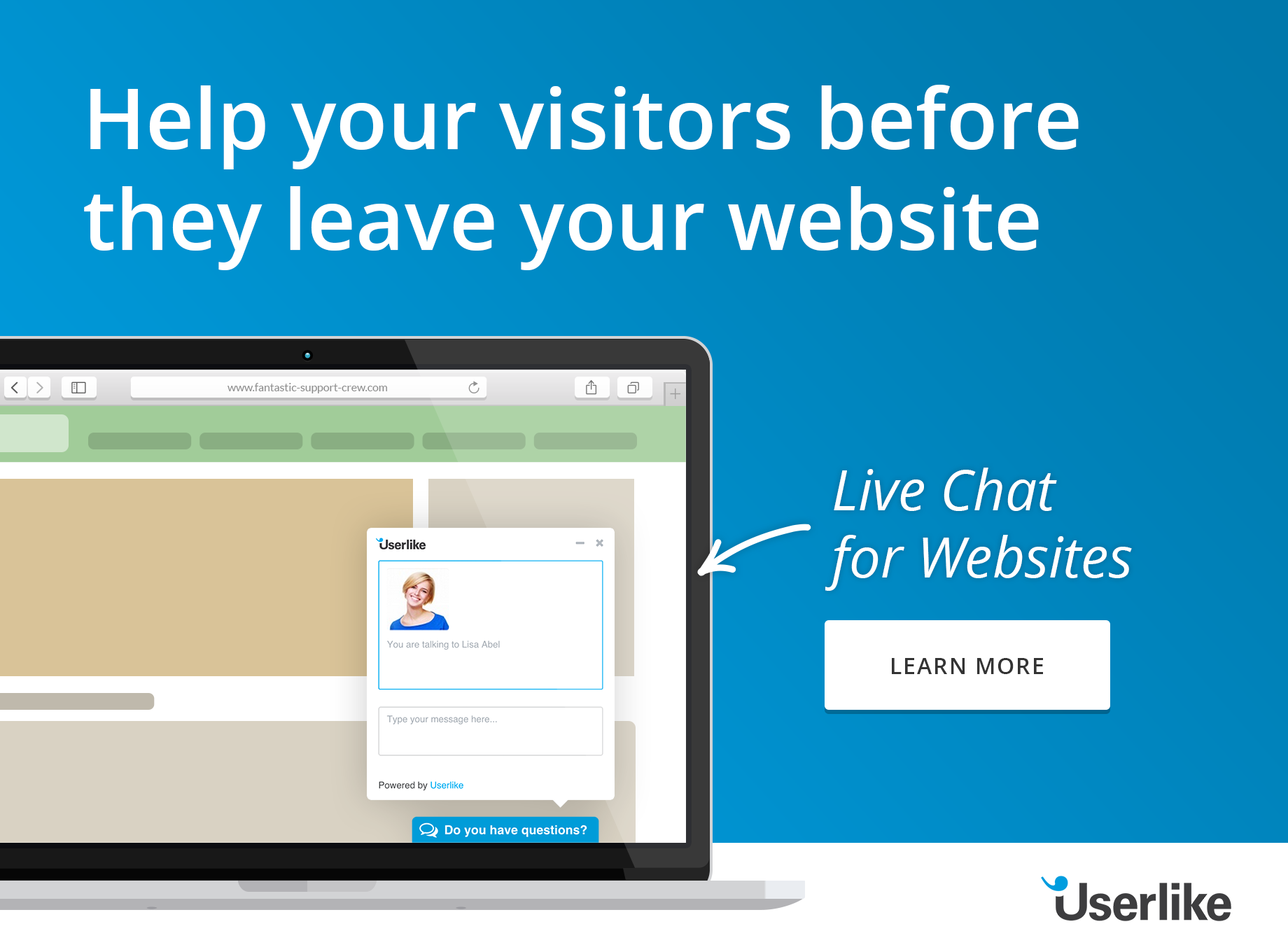
3 Supertrends that will Shape the Future of eCommerce
Five years ago, Twitter trickled onto the mainstream radar, phones began to access 3G and Microsoft launched Bing.com, and most sites hadn’t even considered website live chat as a possibility. Even if you’ve only been an online retailer for a matter of days, you’ll know that the technological landscape is arguably advancing at its most rapid pace yet.

Naturally, these advances have already significantly affected the ways in which consumers behave online, and the face of eCommerce is set to alter just as rapidly as new behaviours become commonplace. Here’s what Userlike predicts will shape eCommerce over the next five years, and what you can do to stay ahead of the game.
I. Coming up: More on mobile

At the start of September, Capgemini research suggested that mobile traffic to eCommerce sites had overtaken desktop visits for the first time . As technology improves and wireless coverage increases, more and more users are reaching for their phones ahead of their computers when it comes to buying online. With current trends set to continue, within the next five years we’d expect as much as 80% or more of future eCommerce traffic in some sectors to come from mobile devices.
Prepare yourself
Ensure your website is mobile-ready, either through a dedicated mobile site or a responsive website. Stick to best practices here: collapsible navigation menus, single column content and big, pressable buttons will all work in your favour. Try to limit the number of pages from basket to purchase completion to decrease the likelihood of losing customers along the way.
II. Coming up: Price and loyalty wars

Since the uptake of eCommerce truly exploded, customers have become increasingly savvy online shoppers. Whilst customers in physical stores might risk paying over the odds to save their poor feet, few online shoppers will behave in the same way when a lower price may be just a few clicks away.
As search engines and price comparison sites become more and more adept at calculating which eCommerce stores are offering the most attractive deals, customers are less likely to remain loyal to particular brands if they are charging more for the same products. Those brands not able to compete on price will have to work harder to offer better service, loyalty schemes or follow-on promotions to build established customer bases that won’t turn elsewhere for their repeat purchases.
Prepare yourself
If your business model won’t allow you to become one of the cheaper brands, you’ll need to work out exactly why else people should be buying from you rather than your competitors and shout about it. If you can offer a compelling loyalty scheme, lightning-fast shipping or unrivalled customer service, you’re more likely to retain customers who might otherwise be tempted elsewhere by lower prices.
III. Coming up: I want it personal, and I want it now

As consumers are presented with more and more choice online, the demand for products that they can ‘make their own’ is set to rise dramatically. Buyers will be looking for more custom options, whether in tailored clothing, personal engraving, or an off-menu colour or size.
However, it isn’t just product demand that will change, but also the customisation and interactivity capabilities of eCommerce sites themselves. Rather than recreating a paper catalogue online, we expect to see more eCommerce sites shifting to greeting customers personally, interacting with them through the buying process and perhaps even offering specific discounts to help persuade customers to purchase from them.
In short, recreating much of what occurs in physical stores. Already, retail giant Amazon uses browsing information from logged in users to create and send out bespoke offers by email to gauge interest and convince customers to complete a sale.
Prepare yourself
Whilst your current eCommerce website might not boast all the bells and whistles that those of the future will, there’s certainly still room for you to provide an outstanding buying experience. Consider using live chat to engage customers through the buying process and offering answers to any questions they may have. Being able to provide support at the time when it’s needed may help you to stand out above your competitors, and adopting the practices and services of the future will stand you in good stead.
Those are our top three predictions for the next five years; how do you think the next five years will shape eCommerce? Remember, if you’d like to glimpse what the future could be like, you can register for a 14 day trial of our online chat to see how it could improve your business.
About Userlike
Userlike is live chat software for websites, allowing companies to chat with their (potential) customers directly over the website. Look here for more information.


